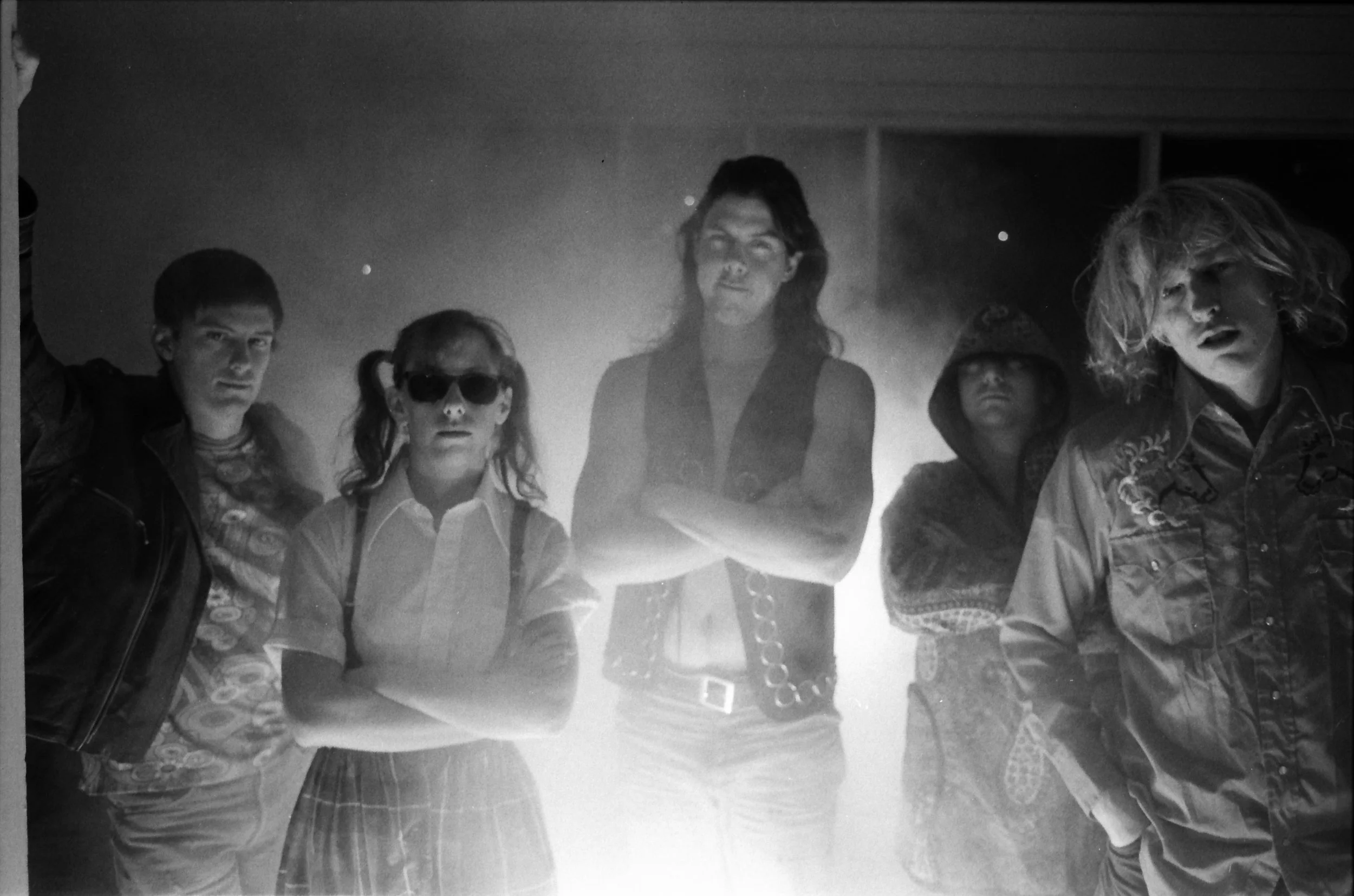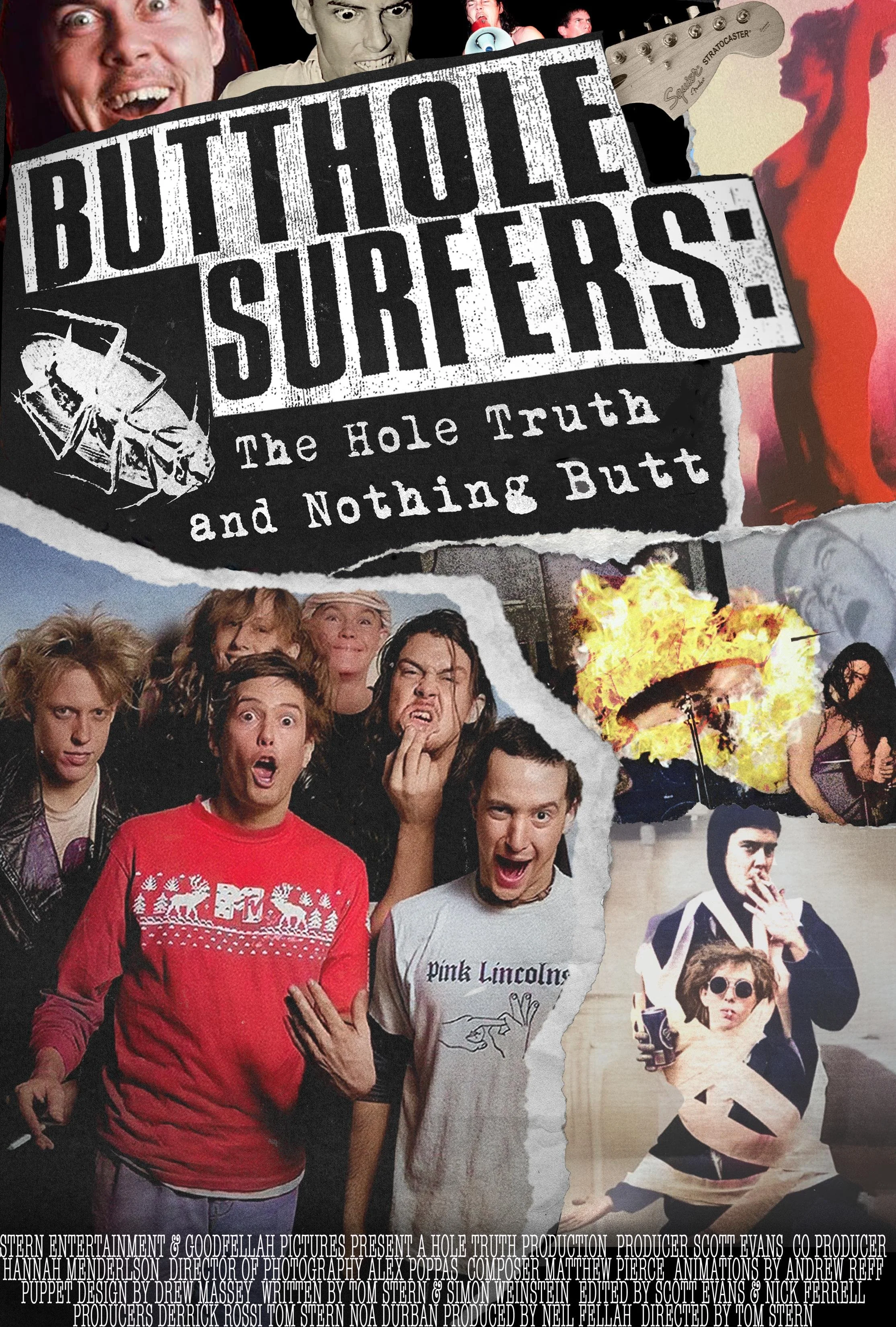Telling the Hole Truth: Director Tom Stern Discusses the Creation of His Epic Butthole Surfers Documentary
Still from Butthole Surfers: The Hole Truth and Nothing Butt.
Butthole Surfers, the groundbreaking art-punk band, are one of the most revolutionary bands of the ’80s. They were chaotic, experimental, electrifying, inventive, and shocking. The new documentary Butthole Surfers: The Hole Truth And Nothing Butt chronicles the band's legendary career and illustrates the significant impact they had on countless rock bands from the ’80s and ’90s.
Ahead of the screening at the CUFF.Docs Documentary Film Festival, REVERIE caught up with Tom Stern, the director and co-writer of Butthole Surfers: The Hole Truth And Nothing Butt.
Stern first saw the Butthole Surfers live in New York in 1984, and they instantly blew him away.
Butthole Surfers: The Hole Truth And Nothing Butt film poster.
“The first thing that brought me in was the double drummers, and they had this tribal thunder they were producing together,” Stern says. “Then they had this crazy, amazing guitar player who seemed to have a whole unique approach to the electric guitar. Then the bass player also played a sousaphone that night, and that was pretty strange. You didn’t see a lot of punk bands with sousaphones. They had this very singular, unique sound… And of course, the frontman Gibby Haynes was this maniac in a housedress with clothespins in his hair and a megaphone. The music was great, but the show itself was so full of mystique and power.”
In 1986, Stern’s working relationship with the Butthole Surfers began when he started filming them at CBGB's. Since then, he has become good friends with the band, collaborating with them across multiple projects including the short film Entering Texas, the feature film Freaked, and the music video for Paul Leary’s “Do You Like To Eat A Cow.” Since Stern has had such a close relationship with the band for so long, he thought it was time they got their own documentary. “I wanted to make sure there was a proper documentary to help cement their place in music history because they deserve it,” Stern says.
Featuring a captivatingly surreal combination of wacky animations, hilarious and bizarre puppet show scenes, intriguing graphics, incredible archival footage, tons of entertaining interviews, chaotic in-your-face energy, and a kinetic editing style, Butthole Surfers: The Hole Truth And Nothing Butt is highly original, just like the band themselves. This is something Stern set out to do from the beginning.
“I wanted to make a movie that was in the spirit of the band, and this is a band that allows you to take a lot of liberties because they were such a pop culture blender and all about absurd juxtaposition, so that allowed me to really think outside the box,” Stern comments. “I had a list of things I wanted to do when I started, and one of them was to not make a visually boring doc where we just sit on talking heads. Even though we did a ton of interviews, I made a point to stay on those shots for a minimum amount of time, then cut to really interesting visuals, like puppet show reenactments of their story, animation, and graphics. The editing style was a big thing, too. I wanted to keep the pace fast and entertaining because they are a really entertaining band, along with being bold and experimental.”
It was important to Stern and co-writer Simon Weinstein that the documentary worked on different levels. They wanted to capture the band’s wild, outlandish, and fascinating personality, but also knew there had to be moments of sincerity and heartache. The result is a documentary that will make you laugh and cry. “The band was funny and outrageous, so I wanted to capture that, and also psychedelic and disorienting, so I wanted to put the audience through that crazy experience,” Stern states. “They had amazing lives, and there is a lot of humanity in these characters, as eccentric as they are, that’s relatable and heartfelt… It’s insane, outrageous, and comedic on one hand, but also completely human and full of heartache, trauma, and pain on the other. That itself is in the spirit of the band because not only were they very entertaining, crazy, experimental, and funny, but there was real emotion in there. When you learn what you learn about Gibby in our movie, you can go back and listen to the lyrics, and they become even more profound.”
Since Stern is such close friends with the members of Butthole Surfers, he says that asking them very personal questions was a bit difficult. “It’s extra awkward to ask tough questions when you’re friends with somebody, and I love these guys, and I didn’t want to make them uncomfortable, but I had to,” he says. “Paul was very open and honest and told me stuff that was emotionally open about his relationship with Gibby, and Gibby not so much. Not so open. He didn’t want to talk about their relationship, so the biggest challenge was getting Gibby to open up… I’m very grateful to the man for sticking with it. It was difficult for him to go where I wanted him to go, but he did it… King [Coffey] was great and very forthcoming. In my very first interview, he got super emotional, and you see that at the end of the film when he talks about the tragic story of his marriage and the death of his husband. Also, [talking about] being gay in Texas and that perspective of being a gay man in that scene. Teresa [Taylor], of course, is such an amazing and compelling character, and tragically, she died during the making of the film, so that got very heavy and emotional. Jeff [Pinkus], that’s its own story, but he ended up doing a great interview.”
One thing that the documentary explores is the massive impact and influence the Butthole Surfers had on rock music, including bands such as Nirvana, Red Hot Chili Peppers, The Flaming Lips, Ween, among many others. “Their shows just became so legendary as they built this amazing performance art spectacle that was backed by this incredible music,” Stern explains. “I think they were one of the first underground post-punk bands that started incorporating the Black Sabbath riff rock, which wasn’t cool at the time in that scene… They came out with a crazy sound but had big riffs. Paul Leary was such a guitar monster – just that undeniable power of that crunchy heavy guitar, Led Zeppelin and Black Sabbath influence, which was very apparent and also formed the basis of Nirvana’s sound. They managed to blend heavy rock riffs with a punk sensibility and sort of Beatles-inspired melodies, and that was such a winning formula for Nirvana. But the Butthole Surfers were one of the first underground bands to take that approach.”
One of the most challenging parts of the documentary was editing down the mountain of footage and the huge number of interviews they conducted to tell a compelling narrative. “There were times when I was just burnt and exhausted and kind of like ‘What the fuck. How are we gonna do this?” Stern reflects. He shares that editors Scott Evans and Nick Ferrell were instrumental in helping him determine which parts to keep and which parts to cut, saying, “They put together some really good rough cuts.”
From here, they just continued to work away until they came up with what they thought was the best version of the documentary. “You don’t need to be a completionist when you make a documentary,” Stern says. “You’re using a tiny ratio of what you have shot to tell this huge story. I had to learn how to just throw out big chunks of what I thought would be in the movie… We kept cutting and refining, and it became this beautiful multi layered, almost novelistic story where there are compelling characters, compelling humans, and compelling subject matter all filtered throughout the history of this band, what was going on around them, the explosion of the underground music scene and Nirvana in the mainstream, and the subsequent major label story of the Butthole Surfers. All those threads weave together to form a tapestry of life that’s very compelling.”
After five years of hard work, Butthole Surfers: The Hole Truth And Nothing Butt made its world premiere earlier this year at SXSW. Stern recalls the day he received the news that the documentary was accepted into the festival. “I got an email from SXSW saying ‘Congratulations! You’ve been accepted,’ and I was like ‘Yeah,’ and was so thrilled, but about three hours later, the mountain near my house caught on fire and my house burned down that night. I lost everything, including all the puppets and the studio in my backyard, where I was making the movie. That was the ultimate good news, bad news day. But we rallied and shot the remaining miniature scenes of the van driving around the globe. We rebuilt the big papier-mâché globe and the vans because everything had burned up. It was like a barn raising. We had a lot of sympathy and goodwill on our side because I had lost everything. All the Barbie doll scenes were shot in the wreckage of my house, specifically the wreckage of the studio in the backyard, because the production value was awesome. As sad as I was about losing all my worldly possessions, the landscape was visually astounding.”
Butthole Surfers: The Hole Truth And Nothing Butt has received overwhelmingly positive reception at every festival so far. “So many people come up to me afterwards and say it’s the best music doc they have ever seen,” Stern smiles. Likewise, the Butthole Surfers were pleased with how the documentary turned out. “I was promoting the film and trying to raise money, and I was like, it's gonna be like you’re at a Butthole Surfers concert. It will be that amazing.’ Paul said he was thinking to himself at the time like ‘Yeah, right,’ but he said when the finished film happened, ‘You did it.’ They all gave me praise. They love the movie. I can die in peace now, having fulfilled that because I was honestly worried and scared that I was gonna make a film they wouldn’t like.”



